Room Service down the Centuries

Weary travellers have been grateful for a place to crash since at least the night that Joseph and Mary found a stable in Bethlehem. And where there's demand, an enterprising innkeeper is sure to be around, cheerfully offering a bed for a buck (or at least a manger and some straw).
While Latvia's written records don't stretch back to Biblical times, archaeological finds reveal people have also been moving around these parts for a very long time. But what kinds of travellers hit our dusty roads in bygone days? And where did the footsore get a feed and some shuteye after a day's hard miles?
Country style
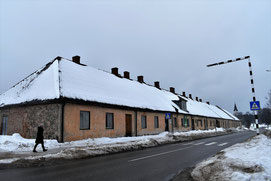
The first roadside taverns appeared on Latvian soil around the 13th century, around the time German crusaders and preachers arrived. In fact, the Latvian word for an inn, krogs, is derived from the German krug, meaning mug or jug.
Which neatly encapsulates one of the key functions of these establishments.
The historic krogs in Jaunpiebalga pictured here is a whopping 110 metres long, the largest of its kind in the country. A century and a half ago, it sat astride the Warsaw-St. Petersburg highway, offering food and lodging to countless humans and their horses, as well as being a community centre where locals held choir rehearsals.

Riga has long been a prime destination for Latvian and foreigner travellers alike. The glass facade of the Raddisson Blu Elizabete Hotel is imprinted with folk songs about the high expectations Latvian peasants had about visiting the city.
For example:
"Big roads, small roads/ All lead to Riga/ Great lords, small lords/ All lie on soft pillows."
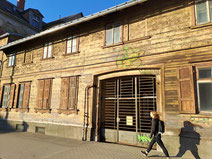
The furnishings were a little rougher for farmers trundling to market in the big smoke. For centuries, they and their steeds lodged at iebraucamās vietas (literally "drive in places") on the outskirts of the city.
Many of these were located on Akmens iela, where the National Library now stands. Here, at the end of the highway from Jelgava, Zemgale and Kurzeme farmers would wait for ferrymen to transport them across the river. And even after a pontoon bridge was installed in the early 18th century, it was often out of service due to bad weather, so the hustle and bustle would continue on the left bank.

The most famous inn here was Melnais gailis (The Black Rooster), whose logo was a tin bird hanging above the entrance. The rooms were upstairs, while on the ground floor it had a centuries-old dining table, covered in scratches from generations of men carving their bread on it.
For some peasants, the trip to Riga was dispiriting. Many Vidzeme and Kurzeme families, and even entire parishes, had unrepayable debts to wealthy Riga citizens, acquired during the wars and famines of the 16th century. These were often carried from generation to generation and kept the debtors in perpetual exploitation. On reaching the city, they were compelled to stay at inns specified by their creditors, where their flax and grain was taken for a song.
Still, other accounts recall farmers who would sell their wares then buy salt, herring and iron to take home. So clearly there was money to be made, too.
Akmens iela declined with the opening of the Riga-Jelgava railway in 1868, as farmers adopted this revolutionary means of transport. There are few reminders there today of the old days, except for one very old wooden house, with a horse-and-cart sized gate leading into an enclosed courtyard. It might very well be the last inn standing.
Travelling troublemakers
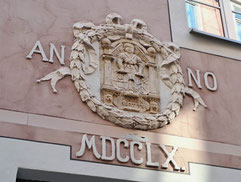
In the Middle Ages, craftsmen's guilds created elaborate rules on who was allowed to work in a town in a particular trade. While touted as a means of keeping up standards, the red tape also protected established masters from ruinous competition.
This meant conflicting interests when young men completed their apprenticeships. They then had a choice of either working as lowly assistants to acknowledged masters, of taking to the road for three years to hone their skills in faraway cities.
Not surprisingly, many chose the latter course, and the roads of medieval Europe teemed with these journeymen looking for opportunities (the name comes from the French journée, because usually they were paid by the day).

Riga's denizens welcomed these keen youngsters, but with strong reservations. On the one hand, journeymen tailors, for example, brought news about the latest fashions to provincial Riga. And the Glassmakers Guild admitted there were simply not enough skilled locals to do their exacting work.
However, the up and comers had a habit of simply setting up shop and getting on with business, undermining the established order. Foreign agitators were also blamed for stirring up strikes by local apprentices and journeymen in Riga, protesting against cruel working conditions.
So great efforts were made to control them. Whereas other German-speaking cities typically had a Gesellenherberge, or journeymen's hostel, Riga's guilds were having none of that. Instead, their charters firmly stated that journeymen were not to leave their master's house at night under any circumstances.
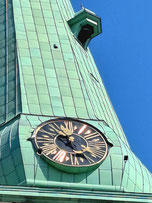
Another sign of the mistrust between masters and journeymen was that the latter had to prove they had actually been to the cities they claimed to have worked in. This was done by informing them about special symbols in the places they stayed, which they had to report to masters further down the road.
Thus, a young chap who had been in Riga would be expected to know the "three wonders": a giant standing by the river (a reference to the statue of St, Christopher the ferryman), the bridge floating on the water, and the bell hanging off the side of St. James's (Jēkaba) Catholic Cathedral.
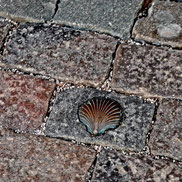
The bell was put in that odd position so another group of travellers, pilgrims, could hear it further away. So exhausted and hungry spiritual wanderers would know that home was within reach.
Riga was (and still is) one of the most northerly starting points for the long trek to Santiago de Compostela in Spain. Hence the scallop shell, symbol of that pilgrimage, embedded in the paving at the entrance to the church.
Business class
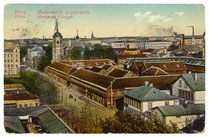
While some took to the road to save their souls, others were in it for the money.
German merchants began to set up shop in Riga in the 1100s. These pioneering traders came in summer, stayed with the native Livs in their village by a lake at the end of the Rīdzene River, then went home when the weather cooled, leaving their goods in the hands of trusted locals.

Bishop Albert arrived in 1201 with more permanent plans. He initially also stayed with the natives, before negotiating with them to obtain a plot of land, where he began building the medieval town.
According to historian Jānis Straubergs in his book Rīgas vēsture (The History of Riga), behind the new stone walls, 13th century Riga was more a collection of homesteads than a city as we know it today. Families kept pigs and cows, and also made space available for visiting merchants to bunk down.
Over time, dedicated compounds sprang up for traders from Lubeck in northern Germany, who may have resembled the gent depicted in "Portrait of a Hanseatic Merchant" by Hans Holbein the Younger (1497-1543) pictured here, and for Russian merchants. The ancient "Russian village" was located on today's Aldaru iela, but was abandoned when contacts with Novgorod and other points east ceased during the 15th century Livonian wars. A few centuries later, another Russian merchants village was established east of the city walls (see the colour postcard). It was demolished to make way for the "Stalin's Birthday Cake" skyscraper after the Second World War.

In the early 18th century, Riga's elite began spending its money on homes that kept up with the fashions in southern Europe. And the centre of the city's cultural life became the elegant Dannenstern Mansion on Mārstaļu iela, where local productions of Moliere's comedies were staged.
These foreign influences were brought in by cosmopolitan foreign merchants. And the Dannenstern house gave accommodation to the poshest of these visitors. It was customary for Riga's traders to extend such hospitality to their visiting partners, thus mixing business and pleasure in just the right proportions.

The Dannenstern House is today sadly neglected. But the cherubs above the gate suggest jolly times back in the day.
On the tourist trail

As the Enlightenment took hold, a class of folks emerged who travelled for pleasure. And the country squires coming to town for a week and nobles doing the grand tours of the continent required suitable places to stay.
Riga's first dedicated hotel, the St. Petersburg, opened in 1763 in a two-story building opposite the castle (on today's Pils laukums).

Apparently, it was nothing to write home about. The toilets stank, and only a few rooms were heated, perhaps because the owner, the widow Lanzevich, was on her sick bed for eight years. But the place was renovated in 1874, with an extra floor added, and under new ownership it operated until the Soviet invasion of 1940.
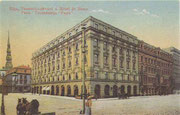
It had to lift its game, because the competition got fierce. In 1878, self-made Latvian businessman and philanthropist Kristaps Morbergs opened the 80-room, neo-Renaissance Hotel de Rome, on Aspazijas bulvāris. It set the service bar high by sending a coach, and later an automobile, to collect guests from the station.
And after a major refit in 1897, it became the first Riga hotel to boast electric lighting, telephones and a lift. Incidentally, another establishment, the Hotel Central, became the first place in Riga to offer guests a breakfast buffet in 1892.
The Hotel de Rome remained Riga's top spot during the first republic. And although it was destroyed by a bomb during the Second World War, it had an unexpected resurrection under Soviet rule (more about that below).
Five Riga hotels with a past
Times change, but today Riga offers places to stay with fascinating histories. Here are five with intriguing memories to accompany the chocolate on the pillow.
1. grand hotel Kempinski riga

After Stalin's death in 1953, Nikita Khrushchev steered the USSR into space by launching Sputnik, the world's first satellite. And he introduced limited reforms to try and normalise life in the totalitarian state.
This included selling package tours to foreign visitors. So hotels were opened, complete with bugs to hear if the visitors planned to do any spying between sightseeing, and "hard currency stores" to squeeze even more dollars from tourists by selling stuff locals couldn't get, like jeans and car tyres.

The Hotel Riga, opened in 1957 on the site of the bombed out Hotel de Rome.
To showcase the achievements of the workers' paradise, no expense was spared in decorating the common areas with marble, chandeliers and artworks - as you enter the lobby, note the stucco depictions of the past, represented by the spires of Old Riga, and the future in the form of smokestacks and chimneys.

In the 2000s, the building was given a facelift by the Kempinski group. To their credit, the designers kept much of the grand decor while adapting the hotel to the needs of well-heeled contemporary guests. The cigar lounged pictured here is a fine example of this "five-star-proletarian" approach.
Another superb holdover is the seventh floor balcony, with magnificent views of the Opera House and the Freedom Monument. The adjacent restaurant offers decadent capitalistic indulgences, including a "doggy menu" for the traveller's best friend.
2. Boutique hotel kristofs

Once upon a time, Riga was a town of one- and two-story medieval dwellings. But as the port boomed in the 18th century, ships brought news of new architectural styles in France and Italy, and northern merchants didn't want to be left behind in the dreary dark ages.

The man most responsible for rebuilding Riga on classical lines was Christoph Haberland (1750-1803). As the city's chief architect, he designed around 20 dwellings in the city and a slew of churches in Latvia and Estonia to align with Enlightenment principles.
One of his masterpieces was his personal residence in the Old Town. Today, visitors can bunk down in this splendid house by getting a room at the Boutique Hotel Kristofs. It's inviting and friendly inside, though few original interior features remain. The portrait of Haberland by the fish pond is a nice touch.
Be sure to check out the Wagner Hall, another Haberland classic just around the corner at Vāgnera iela 4. Richard Wagner was the conductor of the German Theatre orchestra here from 1837 to 1839.
3. monika centrum hotel

This lovely late-19th century neo-Gothic pile is a splendid base to explore the surrounding Art Nouveau district. But it's claim to fame is a woman who made a spiritual rather than a physical mark on the world.

In 1891, Elizabeth Pilenko was born in this building into a family of piously Russian Orthodox merchants. After her father died in 1906, the family moved to St. Petersburg. Following this personal tragedy, Elizabeth lost her faith, and moved for a while in Marxist circles, before concluding it was a sham and returning to Christianity.
She had an unhappy marriage to an alcoholic, which produced a daughter, Gaiana, before ending in divorce. In 1918, during the Russian Civil War, she was put on trial by the White Army for allegedly being a Bolshevik. The judge, Daniel Skobstova, not only found her not guilty, he fell in love with her, and the couple had two children, Yuri and Ananastasia.

Like countless others, the family fled from Russia, living in Yugoslavia before moving to Paris. There, tragedy struck again, as both daughters died of illnesses. After a deep depression, Elizabeth divorced again and became a nun, adopting the name Mother Maria and dedicating herself to helping others.
She set up a house in Paris where the poor and downtrodden could find shelter, food and spiritual solace. After the Nazi occupation, Maria and several other brave resisters, including son Yuri, helped dozens of Jews escape deportation to the death camps by forging documents, and even physically carrying them from the building in garbage cans to evade arrest.

In 1943, the group was arrested by the Gestapo, and Monika was sent to Ravensbruck concentration camp. In 1945, she is said to have swapped places with another woman in the line for the gas chamber. She was canonised in 2004.
The picture here shows how Elizabetes iela (not named after our heroine) would have looked like when Elizabeth lived there. The Monika is on the right, behind the tram
4. A22 Hotel

It's not often a hotel adopts its overall colour scheme from a commemorative plaque. But considering the celebrity who once bunked down here, it makes sense.
Back in the 1930s, the building currently occupied by A22 Hotel was the US Embassy in Riga. And in August 1939, it hosted a then obscure Harvard undergrad named John F. Kennedy on a summer holiday jaunt across Europe.

JFK's dad Joseph P. Kennedy was then the US ambassador in London, and with connections like that John got the red carpet treatment. The American ambassador in Riga, John C. Wiley, sent a car to pick John up from the station, then put him up for a few days in a loft recently added to the embassy building (then a gentle shade of yellow).
The handsome student spent five days in Latvia, visiting Riga's Central Market, then one of the most modern in Europe, and strolling on the beach at Jūrmala with the ambassador's artistic wife Irene.

One hopes notoriously randy Jack kept his hands off Mrs. Wiley. But she was so struck by his looks that she used him as a model for a wooden carving of an angel she was preparing for a church in Antwerp. This is believed to be the first ever artistic portrayal of the future president. Sketches survive but the original was lost as it moved between numerous countries in a soon to be war-swept world.
Kennedy never forgot Latvia. His quote, "Latvians will always reach upwards" coms from a speech he made to a gathering of emigres in Boston in the 1950s.

During the Soviet era, the building was a rundown apartment block, and the only original details to survive are the wooden bannisters on the stairs.
The loft has been converted into the uber stylish Presidential Suite, with a blend of Mid Century Modern and Art Nouveau furnishings complimented by sweeping views of Riga' oldest park, Viesturdārzs. The bathroom pictured here and the bed at the top of the page give a taste of the opulence.
And do chug back a JFK Bloody Mary with vodka, spice mix and molecular celery foam in the Jackie bar downstairs.

If you prefer life's little pleasures, check out Riga's smallest hotel, which occupies a former tram waiting room on the edge of the park.
5. hotel janne
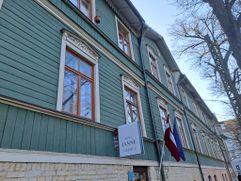
With over 4,000 historic timber buildings, Riga has one of the world's richest collections of wooden architecture. And there's no better place to enjoy it than the Āgenskalns district on the Pārdaugava side of the river.
You can get inside and under the covers of this beautiful heritage with a few nights at Hotel Janne. Here, Entrepreneur Valdis Janovs has restored a cluster of late 19th century working class apartment buildings and turned them into budget hotel rooms and affordable rental flats.
It's a handy place to stay for people receiving outpatient treatment at Stradiņa Hospital across the road. But the quiet, leafy streets also make for a soothing backdrop if you're on holiday.

The neighbourhood is so green even bees flock here. Valdis is an accomplished urban beekeeper, keeping half a dozen hives in the courtyard to make delicious Riga Rooftop Honey. They thrive on the many linden trees in the neighbourhood, and also gather nectar from the hotel's organic vegetable garden.


Write a comment